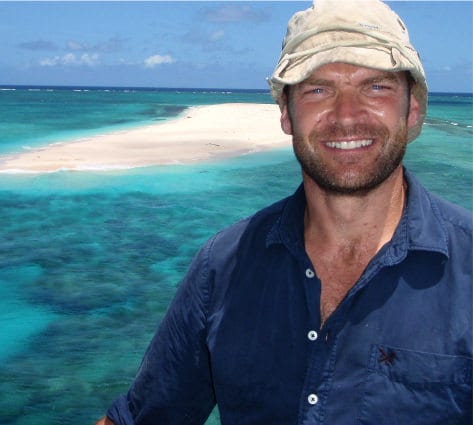A big shout out to G and Lisa for being amazing cruise directors. Crew: BEST CREW!!! Idy is the greatest divemaster we had the pleasure to dive with. He is attentive, safety orientated and knowledgeable. Anto and Kadek made our dining experience a total joy. Food: Excellent, very yummy! The kitchen staff was wonderful even about little things like no garlic in my vegetables ;)
BIOGRAPHY / MATTHEW MEIER

Educated in the USA and Australia, Andrea now lives permanently in Africa spearheading the conservation efforts of manta rays in Mozambique.
Andrea’s PhD research (conducted through the University of Queensland), on the population ecology of manta rays, was the first ever doctoral thesis to be completed on these enigmatic animals.
Her recent discovery of a new giant species of manta ray in 2008 was one of the largest new species to have been described by any scientist in the last 50 years.
She is known as the Queen of Mantas for her outstanding contribution towards a greater understanding of (and protection for) these gentle giants.
MANTA NEWS: In March 2013, at the CITES plenary session on listing sharks and mantas, oceanic white-tip sharks, 3 hammerhead species, porbeagle sharks, sawfish and MANTAS were all protected under CITES (the Convention on International Trade in Endangered Species of Wild Fauna and Flora, also known as the Washington Convention)! The Bahamas supported the listing, recognizing sharks are worth more alive than dead by citing over 80 million US dollars in tourism. Liberia supported the proposal and asked for CITES help in its waters, citing concerns over policing its 560km of coastal waters with only 1 coast guard! The Maldives delegate said; “in 2011 we banned shark and manta ray catches because they are worth more when conserved via alternative livelihoods like ecotourism”.
Regarding the CITES results, Dr Andrea Marshall said (via HER BLOG); “these iconic marine giants have made history again. This time not with the marvels of their biology, with their feats of endurance, or even with their unparalleled grace and beauty, this time they have made history as a trendsetter in a new age of ocean conservation.”
Did you know? “The different species of manta rays have very different distributions, however … the two Manta species are sympatric in a few locations around the globe including Mozambique, Hawaii, and Indonesia but at most of these locations, geographical separation, fine-scale habitat use, or seasonal movement patterns typically keep them from coming in contact with one another.”
Find out more about Dr Marshall, her work at the foundation and the megafauna she studies, at HTTP://MarineMegafauna.ORG Keep up to date with this specific trip at our FACEBOOK EVENT PAGE
CRUISE OVERVIEW
Set sail from Sorong at the western edge of Papua, for a 12-day/11-night cruise, ending back in Sorong. Raja Ampat offers the most striking biodiversity on the planet. Famous dive sites such as Misool, Dampier Strait, Manta Sandy and Boo are all on the agenda. This area is known for its vibrant underwater colours but also its majestic landscapes, making it a perfect destination for keen photographers. The only problem with diving here is that you’ll be so spoiled by the near-perfect conditions that you may never want to leave.
As many divers know, Indonesia is located in the very centre of the Coral Triangle and the variety of species seen underwater is truly astonishing. In certain bays and around small islands, you can find more species than in the entire Caribbean. In Raja Ampat, Gerald Allen (world-famous ichthyologist) counted the incredible number of 284 different species of fish during a single dive. In the same area, 465 different species of corals were found. As a result, scientists nowadays believe that this destination is the world’s current no. 1 spot in terms of biodiversity.
In terms of water temperature and recommendations for wetsuits, for most dive sites in Raja Ampat you can expect 27-30C+ (80-86F+) so a 3mm wetsuit or even a skinsuit is usually fine. For repetitive diving days you may start to notice the cooler thermoclines more than usual, so prefer to wear a slightly thicker wetsuit and/or a hood, but usually 3-5mm is sufficient. We don’t recommend gloves as this can encourage divers to touch corals or delicate reef areas, but for night dives, where you could be more likely to bump into fire coral etc, many divers do prefer earning a full length suit and hood/gloves.